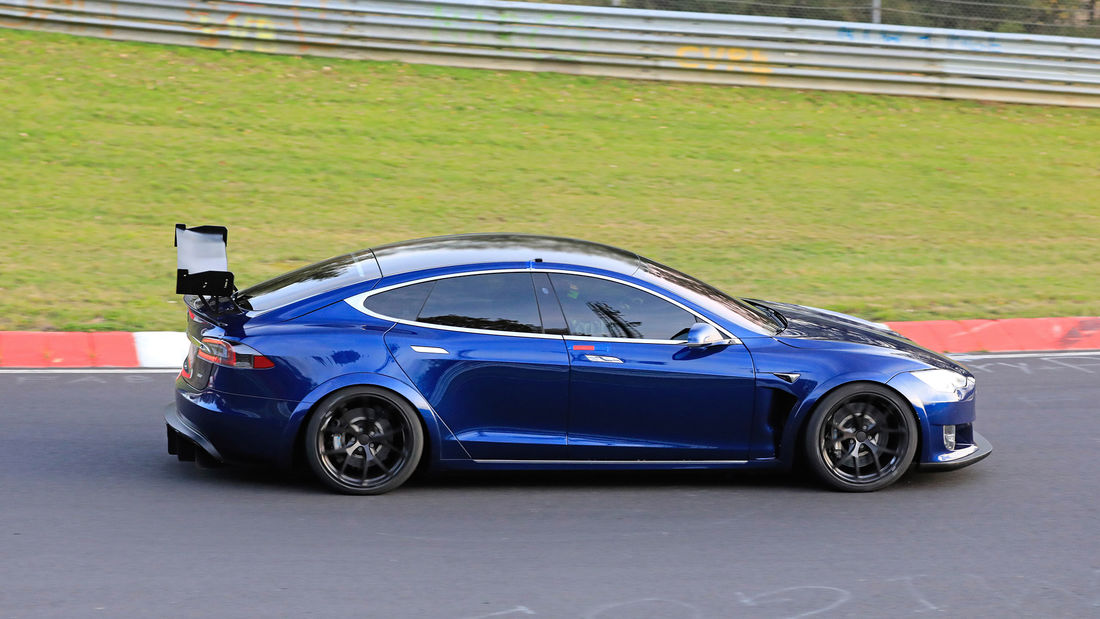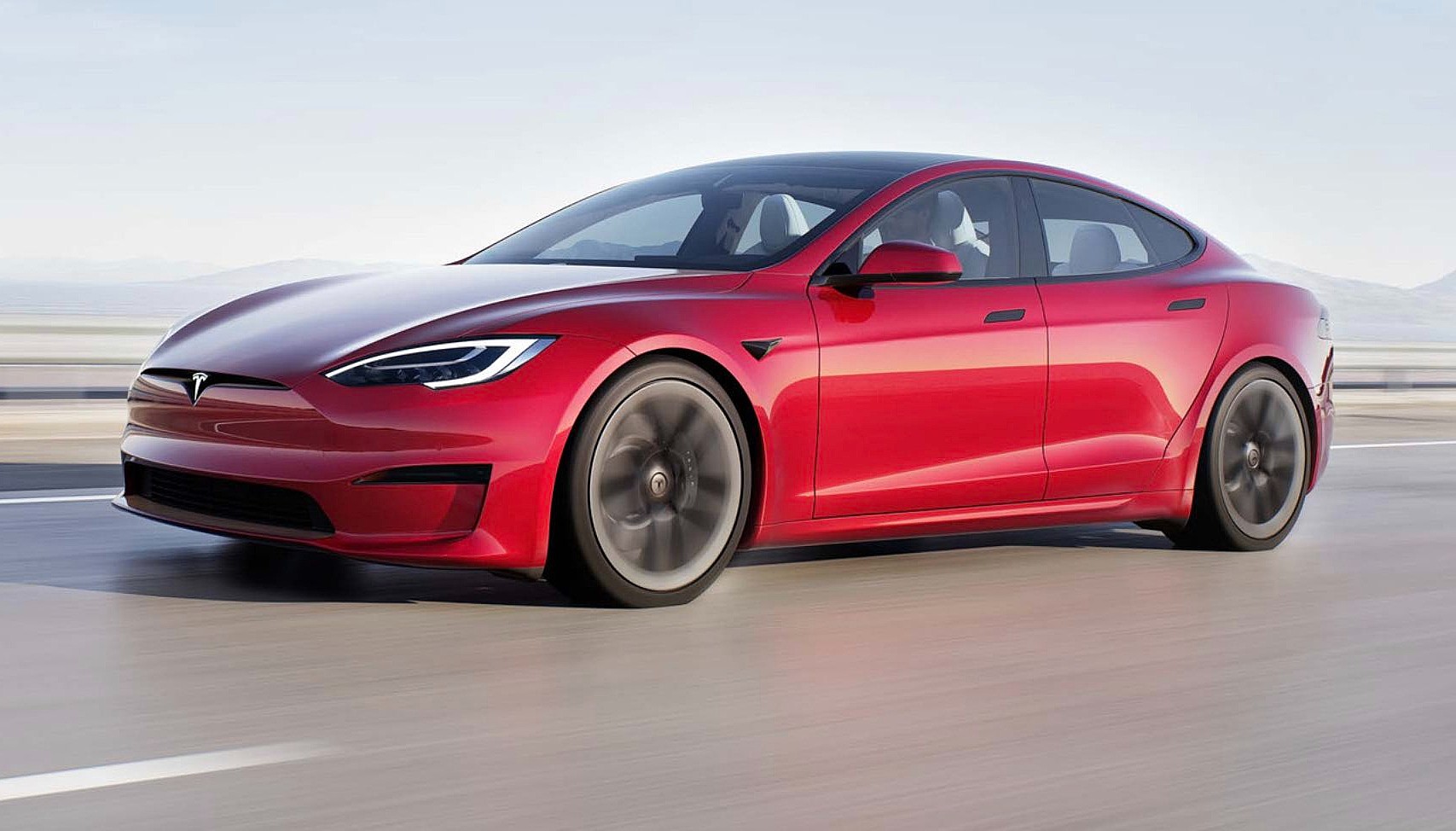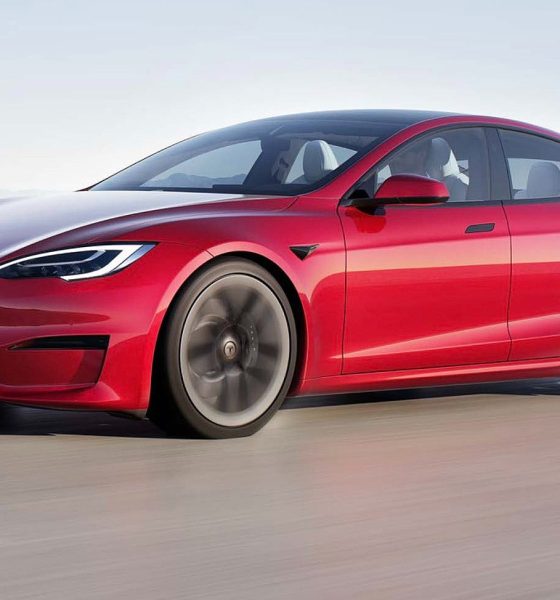This is a preview from our weekly newsletter. Each week I go ‘Beyond the News’ and handcraft a special edition that includes my thoughts on the biggest stories, why it matters, and how it could impact the future.
Tesla has tapped a new type of automotive glass from supplier AGP for the Plaid Model S, invoking the thought that everything, even the finest details of the vehicle, was considered a possible improvement for the company’s rebirth of the all-electric, flagship sedan.
Many months ago, Teslarati stumbled across a list of Tesla’s suppliers through international connections. These suppliers were shipping massive volumes of whatever product they were giving to Tesla on cargo ships, and we noticed that there was a company called AGP that was shipping windshields and other automotive glasses to the company’s Fremont Factory.
It turns out that AGP has been providing Tesla with automotive glass for several years. Back in 2016, AGP provided glass for the Model X’s panoramic roof and windshields. However, Tesla utilized AGC Automotive’s windshields for its cars, according to Investopedia.
AGP is a Peru-based company that specializes in all types of automotive glass, but what they’ve done for Tesla is especially interesting. The company has been in business for 50 years, but just like everything else, it changes, and the automotive industry is no different. As electric vehicles have become more mainstream, technologies surrounding the development of these new, sustainable automobiles are popping up left and right. AGP’s eGlass for electric and autonomous vehicles is no different.
Now, AGP says on its website that it collaborates “closely with the companies that are leading the new wave of the electric and autonomous vehicles of tomorrow.” When I first stumbled across AGP many months ago on the cargo ship list for Tesla, there was no indication that there was an official partnership, so I looked into it a tad further. I reached out to AGP and received a response that thanked me for my inquiry but refused to confirm or deny whether it was in any sort of professional relationship with Tesla. Ironically, AGP gave the answer we needed, because responding to me was all I needed to know.
Many may ask, “What’s the significance of what glass Tesla is using on its cars?” There are plenty of automotive glass suppliers out there that are worth their weight in gold, providing high-quality windshields and windows for vehicles on the road. Of course, consumers are going to want something that is relatively high quality, because nothing is worse than driving behind a tractor-trailer on the Interstate, just to have a chip or small crack on your windshield from something as tiny as a pebble. While strength is undoubtedly a need for all windshields, EVs require a slightly different bit of development.
One of the biggest focuses for EVs is their drag coefficient. Why is it so important? Because aerodynamics are crucial to the performance, range, and effectiveness of electric vehicles. As high-quality, long-range batteries are hard to come by in the EV sector, manufacturers look for every advantage they can get to achieve robust range ratings. While Tesla is the leader in EV range figures, the company is still looking for ways to get all of its vehicles to or near the 400-mile threshold.
Aerodynamics are a great way to do that. And Tesla undoubtedly worked extremely hard to achieve the best-in-class drag coefficient of .208, beating out the Lucid Air’s impressive .21 coefficient.
We knew aerodynamics was going to be a big part of the Plaid Model S when it was spotted at the Nürburgring two years ago. The vehicle was sporting a large spoiler, a huge rear diffuser, and the new eGlass from AGP is just another addition to Tesla’s attempts to make the Plaid Model S the most aerodynamic vehicle in its lineup.

A blue Tesla Model S Plaid unit with new aeros attacks the Nurburgring. (Photo: Stefan Baldauf/Auto Motor Uund Sport)
We finally confirmed that AGP was providing the highly aerodynamic and EV-specific automotive glass to the Model S Plaid thanks to Tesla Raj, who took a picture of the manufacturer’s sticker on the window of the all-electric sedan at Tesla’s Delivery Event on June 10th. This all confirmed Teslarati’s discovery of AGP in its supplier list several months ago and also confirmed that the two companies had a partnership, despite AGP’s unwillingness to provide a comment (which we understood why!)
New window manufacturer? pic.twitter.com/m4gjhkl7kR
— Tesla Raj (@tesla_raj) June 11, 2021
It makes me think about what Elon Musk may have needed to work on for the final week of Plaid development. When he had announced that the event was going to be delayed a week due to “tweaks,” I wondered whether it was software or hardware. While it was likely a software fix that needed to be addressed, it could have been related to the drag coefficient, which Tesla proudly displayed at the Plaid Event on the 10th. Nevertheless, the vehicle has finally been released to pre-orderers, and the fastest production car that has ever run the 1/4-mile drag is here, and it’s taking down anything in its path.
A big thanks to our long-time supporters and new subscribers! Thank you.
I use this newsletter to share my thoughts on what is going on in the Tesla world. If you want to talk to me directly, you can email me or reach me on Twitter. I don’t bite, be sure to reach out!
-Joey

News
Tesla FSD fleet is nearing 7 billion total miles, including 2.5 billion city miles
As can be seen on Tesla’s official FSD webpage, vehicles equipped with the system have now navigated over 6.99 billion miles.

Tesla’s Full Self-Driving (Supervised) fleet is closing in on almost 7 billion total miles driven, as per data posted by the company on its official FSD webpage.
These figures hint at the massive scale of data fueling Tesla’s rapid FSD improvements, which have been quite notable as of late.
FSD mileage milestones
As can be seen on Tesla’s official FSD webpage, vehicles equipped with the system have now navigated over 6.99 billion miles. Tesla owner and avid FSD tester Whole Mars Catalog also shared a screenshot indicating that from the nearly 7 billion miles traveled by the FSD fleet, more than 2.5 billion miles were driven inside cities.
City miles are particularly valuable for complex urban scenarios like unprotected turns, pedestrian interactions, and traffic lights. This is also the difference-maker for FSD, as only complex solutions, such as Waymo’s self-driving taxis, operate similarly on inner-city streets. And even then, incidents such as the San Francisco blackouts have proven challenging for sensor-rich vehicles like Waymos.
Tesla’s data edge
Tesla has a number of advantages in the autonomous vehicle sector, one of which is the size of its fleet and the number of vehicles training FSD on real-world roads. Tesla’s nearly 7 billion FSD miles then allow the company to roll out updates that make its vehicles behave like they are being driven by experienced drivers, even if they are operating on their own.
So notable are Tesla’s improvements to FSD that NVIDIA Director of Robotics Jim Fan, after experiencing FSD v14, noted that the system is the first AI that passes what he described as a “Physical Turing Test.”
“Despite knowing exactly how robot learning works, I still find it magical watching the steering wheel turn by itself. First it feels surreal, next it becomes routine. Then, like the smartphone, taking it away actively hurts. This is how humanity gets rewired and glued to god-like technologies,” Fan wrote in a post on X.
News
Tesla starts showing how FSD will change lives in Europe
Local officials tested the system on narrow country roads and were impressed by FSD’s smooth, human-like driving, with some calling the service a game-changer for everyday life in areas that are far from urban centers.

Tesla has launched Europe’s first public shuttle service using Full Self-Driving (Supervised) in the rural Eifelkreis Bitburg-Prüm region of Germany, demonstrating how the technology can restore independence and mobility for people who struggle with limited transport options.
Local officials tested the system on narrow country roads and were impressed by FSD’s smooth, human-like driving, with some calling the service a game-changer for everyday life in areas that are far from urban centers.
Officials see real impact on rural residents
Arzfeld Mayor Johannes Kuhl and District Administrator Andreas Kruppert personally tested the Tesla shuttle service. This allowed them to see just how well FSD navigated winding lanes and rural roads confidently. Kruppert said, “Autonomous driving sounds like science fiction to many, but we simply see here that it works totally well in rural regions too.” Kuhl, for his part, also noted that FSD “feels like a very experienced driver.”
The pilot complements the area’s “Citizen Bus” program, which provides on-demand rides for elderly residents who can no longer drive themselves. Tesla Europe shared a video of a demonstration of the service, highlighting how FSD gives people their freedom back, even in places where public transport is not as prevalent.
What the Ministry for Economic Affairs and Transport says
Rhineland-Palatinate’s Minister Daniela Schmitt supported the project, praising the collaboration that made this “first of its kind in Europe” possible. As per the ministry, the rural rollout for the service shows FSD’s potential beyond major cities, and it delivers tangible benefits like grocery runs, doctor visits, and social connections for isolated residents.
“Reliable and flexible mobility is especially vital in rural areas. With the launch of a shuttle service using self-driving vehicles (FSD supervised) by Tesla in the Eifelkreis Bitburg-Prüm, an innovative pilot project is now getting underway that complements local community bus services. It is the first project of its kind in Europe.
“The result is a real gain for rural mobility: greater accessibility, more flexibility and tangible benefits for everyday life. A strong signal for innovation, cooperation and future-oriented mobility beyond urban centers,” the ministry wrote in a LinkedIn post.
News
Tesla China quietly posts Robotaxi-related job listing
Tesla China is currently seeking a Low Voltage Electrical Engineer to work on circuit board design for the company’s autonomous vehicles.

Tesla has posted a new job listing in Shanghai explicitly tied to its Robotaxi program, fueling speculation that the company is preparing to launch its dedicated autonomous ride-hailing service in China.
As noted in the listing, Tesla China is currently seeking a Low Voltage Electrical Engineer to work on circuit board design for the company’s autonomous vehicles.
Robotaxi-specific role
The listing, which was shared on social media platform X by industry watcher @tslaming, suggested that Tesla China is looking to fill the role urgently. The job listing itself specifically mentions that the person hired for the role will be working on the Low Voltage Hardware team, which would design the circuit boards that would serve as the nervous system of the Robotaxi.
Key tasks for the role, as indicated in the job listing, include collaboration with PCB layout, firmware, mechanical, program management, and validation teams, among other responsibilities. The role is based in Shanghai.
China Robotaxi launch
China represents a massive potential market for robotaxis, with its dense urban centers and supportive policies in select cities. Tesla has limited permission to roll out FSD in the country, though despite this, its vehicles have been hailed as among the best in the market when it comes to autonomous features. So far, at least, it appears that China supports Tesla’s FSD and Robotaxi rollout.
This was hinted at in November, when Tesla brought the Cybercab to the 8th China International Import Expo (CIIE) in Shanghai, marking the first time that the autonomous two-seater was brought to the Asia-Pacific region. The vehicle, despite not having a release date in China, received a significant amount of interest among the event’s attendees.










